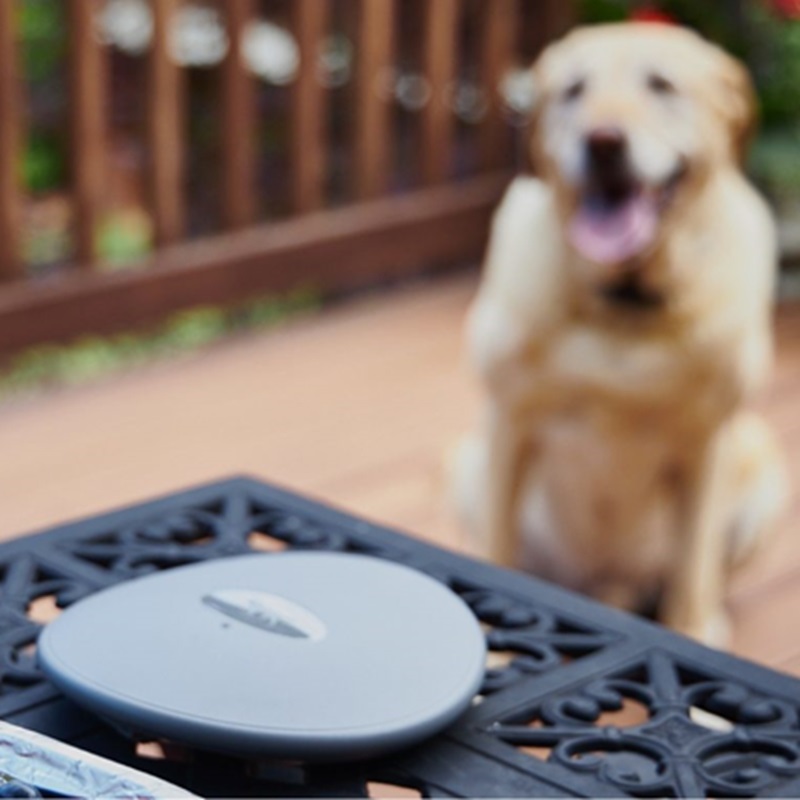Wireless vs. Wired Pet Dog Barriers: Which Is Better?
The need to set restricted areas for your dog in your home arises from the need to improve its safety, for sure, but also from the need to reduce your worry. The use of these fences is mainly for setting a boundary in large areas in your home that are undefined and can let your dog wander, get lost or get attacked. While in the past, the choice of these barriers for dogs was poor, nowadays, you can choose from a large selection, mainly ranging in type. The most popular and commonly used types of these kinds of fences are the wireless and wired fences.
What Are Wireless Barriers?
The greatest thing about these fences is that they are wireless, and you don't need any wires to use them. This means that these convenient barriers for dogs are invisible to the naked eye, and you won't have to dig anywhere in your yard to bury wires and make it work. The entire system of these barriers is built into the collar, and in order to work, you just need your phone, on which you should download the app. Simple as that!
Unlike traditional fences and the wired ones, these are way more convenient and easy to use. Generally speaking, these collars work by emitting a signal in a circle around a centrally located transmitter, which should be plugged into an outlet. The receiver, on the other hand, is located in the wireless dog collar. The transmitter is designed to emit radio frequencies, so if the dog attempts to cross the boundary, it'll receive an electrical static stimulus. Nowadays, you can choose from two types of wireless barriers: GPS-enabled and radio-frequency wireless fences.
GPS-Enabled
As you can assume, these fences use a satellite that can determine the precise location of the dog. That way, they create a boundary that cannot be seen with the naked eye, however, the dog will feel it once it goes near it. Once the GPS signals are transmitted to the dog's collar, the collar will start sending auditory signals like beeps, buzzes or vibrations, and also some corrective measures like bursts of static electricity and electric shock. All of this is done in order to discourage your dog from staying around the designated area and not going over the barrier.
Radio Frequency
These fences work by using a central transmitter to create a radio signal that creates a barrier. Just like with the previous case, in this one, the dog also receives signals through a collar worn by the dog. Once the dog gets near the boundary, the collar starts sending warning signals in the form of static or electric stimulation as a means of correction.
What Are Wired Barriers?
As the name suggests, these systems contain a wire that needs to be buried or installed above ground. Either way, this wire serves as a boundary marker where the centrally positioned transmitter emits a signal, and the receiving dog's collar detects it. So, once your dog approaches the wire, the collar starts sending signals in the form of a beeping sound, vibration, a combination of both or in the form of bursts of static electricity.
Which Is Better?
One of the greatest benefits of the wireless barriers is that they can be easily installed, and you won't have to dig in order to bury the wire. The ease of installation and increased convenience are, in fact, one of the greatest benefits one can receive by deciding to use this form of boundary. Practice shows that these flexible solutions are also adored because they don't obstruct visibility, and there's no risk of someone tripping over them. This mainly goes to children and older people. They certainly are a more cost-effective solution than the wired ones, since they don't need any special installation process.
Additionally, these solutions also allow for being transported from one place to another, making them ideal for those of you who travel a lot with your dogs. Having barriers of this kind also means that you won't have to worry about breaking the wire or the contact with the receiver.
Even though it's said that the wired dog fences are easy to install, when compared to the wireless ones, they are still more difficult to install. It's said that most of these systems come with easy-to-follow instructions, which reduce time and labour costs. When compared to traditional fences, these ones are more affordable and user-friendly. Just like the wireless, these fences can also be installed in any place of your home, whether you have a small or large garden and backyard. When it comes to their effectiveness, it is said that these systems are quite effective and with proper training, your dog can quickly learn its boundaries. When compared to the other type, it seems that the wired ones require more effort and time to be effective, which is considered a bit of a drawback. But in the end, it all comes down to your needs and preferences, so before making any decision, make sure to weigh their pros and cons.




